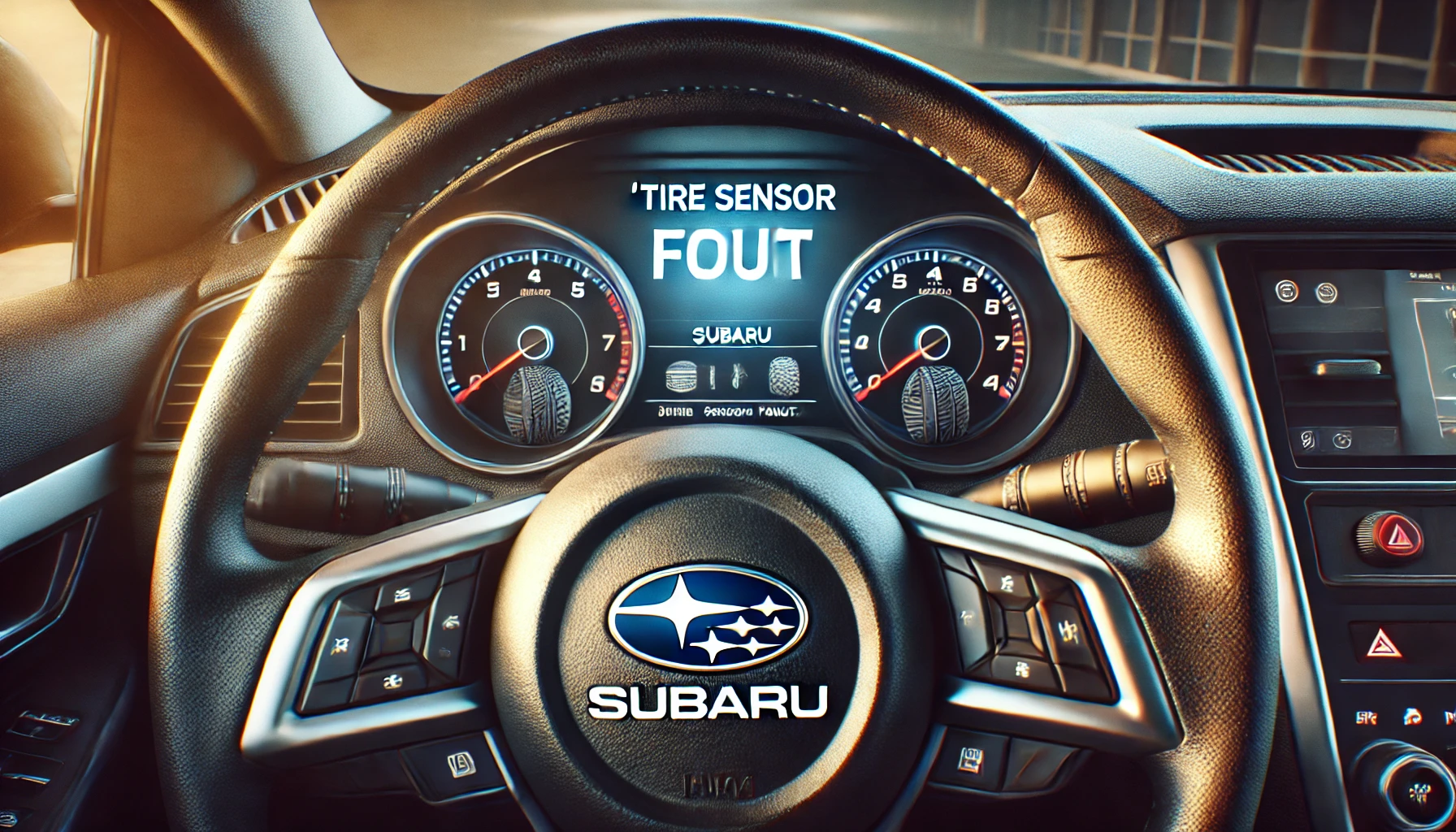
Subaru vehicles, known for their all-weather capability and advanced technology, feature a Tire Pressure Monitoring System (TPMS) to ensure optimal tire pressure for safe driving. If your Subaru displays a Tire Sensor Fault warning, it means there’s an issue with the TPMS system. This warning can be triggered by various factors, but the good news is that it’s often easy to fix. In this guide, we’ll explore the common causes of a tire sensor fault in Subaru vehicles and walk you through the steps to resolve it.
Common Causes of Tire Sensor Fault in Subaru Vehicles
Several common factors can cause a Tire Sensor Fault in Subaru vehicles:
- Low Tire Pressure: The most common reason for a tire sensor fault is low tire pressure. If the pressure in one or more tires drops below the recommended level, the system triggers a fault.
- Faulty or Damaged Sensors: Tire sensors can wear out over time, especially if damaged during tire changes or driving on rough terrain. A damaged sensor may send incorrect data to the TPMS.
- Sensor Battery Failure: TPMS sensors in Subaru vehicles are battery-powered, and these batteries last for several years. If the battery dies, the sensor can no longer communicate properly, causing a fault warning.
- Radio Frequency Interference: Occasionally, external electrical interference can disrupt the communication between the TPMS sensors and the vehicle’s onboard computer, triggering a fault message.
- Recent Tire Service: If the tires were recently rotated or changed, the sensors may not have been reset correctly, which could result in a sensor fault.
Steps to Fix Tire Sensor Fault in Subaru Vehicles
Here are the steps to troubleshoot and resolve a Tire Sensor Fault in your Subaru vehicle:
1. Check Tire Pressure
The first step is to manually check the pressure in all four tires using a tire pressure gauge. You can find the recommended tire pressure in your Subaru owner’s manual or on a sticker inside the driver’s door.
- Inflate any under-inflated tires to the recommended pressure.
- Once the tire pressure is corrected, drive your vehicle for a few miles to allow the TPMS to recalibrate. In many cases, this will resolve the Tire Sensor Fault warning.
2. Reset the TPMS System
If adjusting the tire pressure doesn’t clear the fault, you may need to reset the TPMS system manually. The reset procedure for Subaru vehicles can vary by model, but here’s a general approach:
- Turn the vehicle’s ignition to the On position without starting the engine.
- Navigate to the Vehicle Settings on the dashboard using the steering wheel controls.
- Select the option to Reset TPMS or Relearn Tire Positions.
- Drive the vehicle for about 10-15 minutes at a steady speed of at least 15 mph to allow the system to recalibrate.
If successful, the Tire Sensor Fault message should disappear.
3. Inspect Tire Sensors for Damage
If resetting the TPMS system doesn’t resolve the issue, inspect the sensors for damage. The sensors are located inside the tires, usually attached to the valve stem. Damage to a sensor can occur during tire changes, rotations, or rough driving.
If a sensor is visibly damaged, it will need to be replaced. This is a job best handled by a Subaru-certified technician or a trusted mechanic, as it requires specialized tools.
4. Replace Sensor Battery
Each TPMS sensor is powered by a small battery, which can wear out after several years of use. If a sensor’s battery is weak or dead, the sensor will stop functioning and trigger a fault. Unfortunately, the battery in these sensors cannot be replaced individually, so the entire sensor will need to be replaced.
Visit a Subaru dealership or an authorized service center to have the sensor replaced and recalibrated with the vehicle’s TPMS system.
5. Update the Vehicle’s Software
In some cases, a Tire Sensor Fault may be caused by a software issue in the vehicle’s onboard system. Subaru periodically releases software updates that can fix bugs or glitches affecting the TPMS system. If none of the previous steps resolve the issue, check with your local Subaru dealer to see if a software update is available for your model.
Preventing Future Tire Sensor Faults
- Regular Tire Pressure Checks: Make it a habit to check your tire pressure monthly, especially during temperature changes, as fluctuating temperatures can affect tire pressure and cause false TPMS warnings.
- Handle Tire Changes Carefully: When changing or rotating tires, make sure that the tire sensors are handled carefully to prevent damage.
- Routine Maintenance: Ask your mechanic to inspect the TPMS sensors during regular vehicle maintenance to ensure they are functioning properly.
- Keep Software Up to Date: Ensure your vehicle’s software is up to date to avoid any potential glitches with the TPMS system.
Conclusion
A Tire Sensor Fault warning in your Subaru is often a minor issue that can be resolved with simple troubleshooting. By checking tire pressure, resetting the TPMS, and inspecting the sensors, you can usually resolve the problem quickly. If the issue persists, visiting a Subaru-certified service center to have the sensors repaired or replaced will ensure your vehicle remains safe and reliable on the road. Regular maintenance of tire pressure and sensor health will help prevent future issues.
